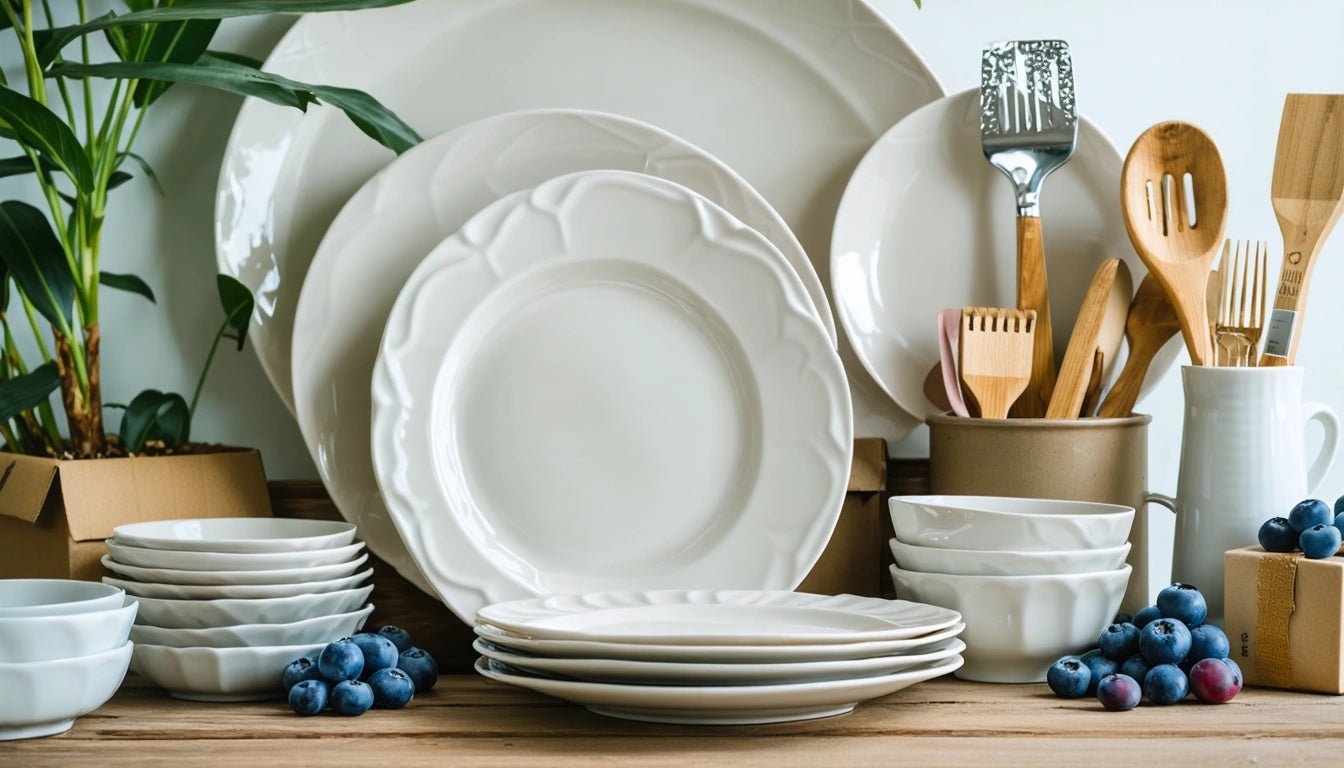Table of Contents
How to Pack Dishes and Plates Safely for Moving
Moving to a new home involves carefully transporting your belongings, with dishes and plates being among the most fragile items requiring special attention. Knowing the best way to pack dishes for moving can mean the difference between arriving with intact kitchenware or opening boxes of broken shards. This comprehensive guide will walk you through proven techniques to ensure your plates and dishes arrive safely at your new destination.
Gathering the Right Supplies for Dish Packing
Before you begin packing, collecting the proper materials is essential for protecting your dishes:
- Dish boxes or cell kits: These specialized boxes have dividers to separate and protect individual dishes
- Packing paper: Unprinted newsprint is ideal (avoid newspaper as the ink can transfer)
- Bubble wrap: Extra protection for particularly fragile items
- Packing tape: Heavy-duty tape to secure box bottoms and tops
- Markers: For labeling boxes clearly
- Foam plates: Can be placed between dishes for added protection
You can find quality moving boxes and packing supplies at various retailers. This guide on where to buy packing boxes offers several options for sourcing affordable moving supplies.
Preparation Steps Before Packing Dishes
Proper preparation will streamline the packing process:
First, clean and dry all dishes thoroughly. Working with clean dishes prevents food residue from attracting pests during transit. Next, create a packing station with a flat, clean surface covered with packing paper or towels to prevent dishes from sliding. Finally, reinforce the bottoms of your boxes with extra tape in a H-pattern for added strength.
When organizing your workspace, consider using a sturdy surface like flat, durable trays to hold your packing materials and provide a stable platform for wrapping individual items, making the process more efficient and reducing the risk of accidents.
Best Way to Pack Plates for Moving
The best way to pack plates for moving involves these steps:
- Lay a sheet of packing paper on your work surface
- Place a plate in the center of the paper
- Fold the corners of the paper over the plate, covering it completely
- Add a second plate on top and repeat the wrapping process
- Create bundles of 3-4 plates maximum
- Wrap the entire bundle with an additional sheet of paper
Always pack plates vertically in the box, like records in a crate, rather than stacking them horizontally. This vertical orientation reduces pressure on the plates and minimizes the risk of breakage during transport.
How to Properly Pack Bowls and Curved Dishware
Bowls and curved dishes require a slightly different approach:
Start by placing a bowl upside-down in the center of a packing sheet. Wrap it similarly to plates, but take care to tuck the paper into the bowl's cavity. For nested bowls, place a layer of paper between each bowl to prevent them from sticking together. Stack bowls of similar size together, with the largest at the bottom.
For odd-shaped items like gravy boats or sugar bowls, fill any hollow spaces with crumpled paper to provide internal support. This guide on safely packing glassware offers additional techniques that work well for uniquely shaped dishware.
Box Packing Techniques for Maximum Protection
How you arrange items within the box is crucial:
Line the bottom of the box with crumpled paper or bubble wrap, creating a 2-3 inch cushion. Pack heavier items at the bottom and lighter, more fragile pieces toward the top. Fill all empty spaces with packing material to prevent shifting during transport. Aim to make the box full but not overstuffed, as this could put pressure on the dishes.
Each box should weigh no more than 45 pounds when packed. Label all sides with "FRAGILE" and "THIS SIDE UP" markings, and include a brief inventory of contents. Consider using color-coded labels to identify kitchen-specific boxes for easier unpacking.
Finding affordable packing materials is essential for a cost-effective move. This resource on buying packing supplies in bulk can help you source materials economically.
Handling Special and Fragile Items
Fine china, heirloom pieces, and uniquely shaped items need extra attention:
For fine china or valuable dishes, consider double-boxing for maximum protection. First, pack the dishes in a smaller box following the standard methods, then place this box inside a larger one with cushioning material all around.
For extremely delicate items, wrap each piece individually in bubble wrap before using packing paper. Stemware should be wrapped with special attention to the stems, which are particularly vulnerable.
Consider keeping your most valuable or irreplaceable items with you during the move rather than loading them onto the moving truck. This approach, similar to how delicate food items are transported, provides the highest level of security.
Moving Day Tips for Transporting Packed Dishes
On moving day, proper handling of your packed dishes is essential:
Load dish boxes onto the truck in a position where they won't be crushed by heavier items. Place them on top of sturdy, flat furniture or between soft items like mattresses or cushions. Never stack heavy items on top of boxes containing dishes.
When unloading, carry dish boxes from the bottom rather than gripping the handholds, which can tear under weight. Unpack dishes as soon as possible after arriving at your new home to check for any damage and file insurance claims if necessary.
For long-distance moves, consider using professional packing services for your kitchen items. The additional cost may be worthwhile for the peace of mind and protection of valuable dishware.
By following these comprehensive packing techniques, you'll ensure your dishes arrive intact at your new home. The best way to pack dishes for moving combines proper materials, careful wrapping, and strategic box arrangement to protect your valuable kitchenware throughout the moving process.



















